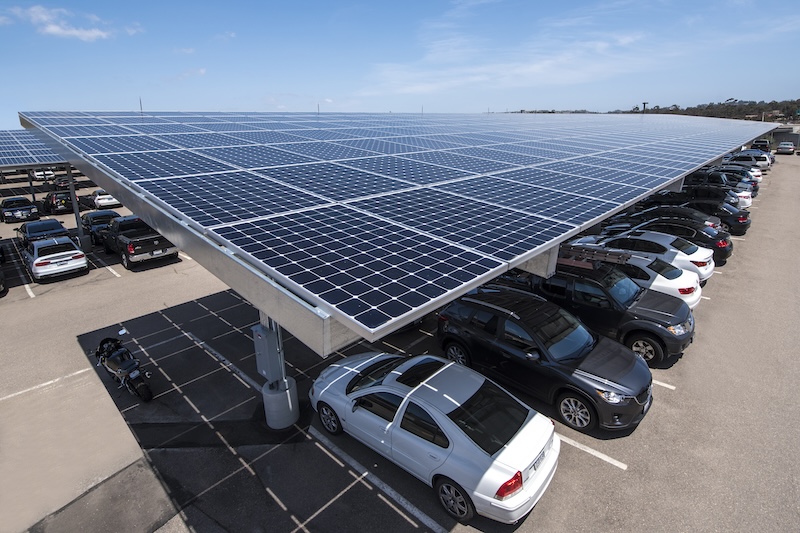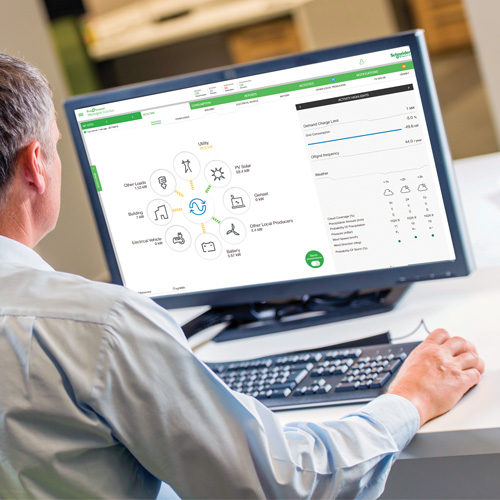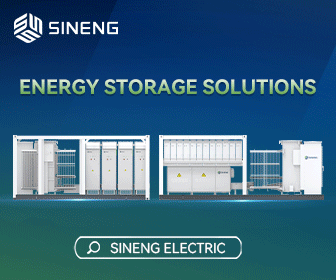AI Rewrites the Rules of Power Resilience
According to Climate.gov, 2023 was a historic year for unprecedented and costly damage caused by natural disasters. In fact, the U.S. experienced 28 weather and climate disasters that each cost at least 1 billion dollars. In addition, in the US alone, the likelihood of a power outage due to extreme weather has doubled over the last two decades. And at a global scale, increasingly severe weather coupled with aging grid infrastructure is exposing us to a higher risk of energy blackouts.
In a world where climate events are becoming even more serious and unpredictable, one thing is certain — there are innovative ways to protect cities and businesses from power disruptions, and increase reliability during extreme weather. With heatwaves, floods, and storms causing major main grid issues, and with growing frequency, it is becoming more important to boost on-site energy resiliency and mitigate disruption to businesses.

Microgrids offer significant advantages in maintaining reliability during extreme weather events. Investing in microgrids is a strategic decision that empowers businesses and communities to ensure uninterrupted power supply and defend critical operations.
Unlike the traditional grid, microgrids can disconnect themselves from the main power source to operate independently during outages. This islanding functionality ensures continued power supply, even when the broader grid experiences disruptions due to extreme weather. In addition, microgrids can incorporate on-site renewable energy sources and battery storage along with onsite backup generators, providing a local source of power during outages. This ensures a seamless transition to a reliable power source during extended outages due to severe weather.
How can we better manage unpredictable weather when it comes to grid uptime? There are several methods and solutions that can work together to maximize operational control and optimize the renewable energy produced on-site (as well as energy used from the grid, when needed).
In order to stay ahead of extreme climate events, companies need to dynamically control on-site energy resources and loads to augment a business or facility’s performance. AI-powered software seamlessly connects to distributed energy resources to automatically forecast and decide the best way and time to consume, produce, and store energy. This will be key to understanding real-time savings, earnings, and CO2 emissions data.
Let’s dive into this concept within the context of an individual building. With AI-powered software, facilities can now be fully prepared for the worst of extreme weather events better than ever before. Software with advanced decision making can monitor a facility’s energy data 24/7; marrying this data with utility grade information from the US weather service, companies have visibility and insights to predict major storms.
This integrated weather data helps a business decide when to switch the system to a storm hardening mode to protect operations. With the concept of storm hardening and islanding, companies are able to prepare a facility or site for islanding, or potentially pre-islanding the site before a utility grid outage.
How does the latest technology accomplish this? AI-powered software is able to use predictive analytics to carefully balance electricity consumption and generation to increase resiliency. It ingests historical data, weather forecasts, energy market pricing, and scheduled operations such as production or building occupancy, to optimize energy flows in case of grid outages. If a storm is on its way, the energy storage is topped off, and non-critical site functions are shut down to minimize impact to operations in case of a blackout.

A case study for preparedness
Let’s look at an example of this in the real world. 2022 left millions of Europeans facing power outages from freezing temperatures, combined with an already strained energy market. Amid these challenges, a property developer for a shopping center near Helsinki, Finland, decided it was time to safeguard the facilities from a potential energy crisis to prevent downtime, and ensure businesses could remain functional.
The property developer decided to implement an end-to-end solution of integrated energy generation, storage, and management into a microgrid. With the help of advanced software, the owners also gained access to AI-powered automated decision-making, enabling them to best balance the use of storage, onsite renewable power, and grid power depending on pricing, weather forecasts, and other variables. As a result, the shopping center is more resilient to power outages, and also helps to ease grid overconsumption by finding the best times to sell electricity to the grid.
Because the AI-enabled advanced software is looking at weather forecasts, and doing a very complex set of calculations to determine when it’s most useful to sell energy back to the grid, the shopping facility is able to both island itself before a major storm and sell energy back to the major grid at the most opportune time — making it a win-win.
This combination of solutions kept the lights on during the winter. It also cut 335 metric tons of CO2 emissions per year, contributed to a 14 percent reduction in annual energy costs, and added Є129,000 in annual revenues from building-to-grid sales. This is a fantastic example of how facilities can both safeguard against storms, save (and make) money on energy, and, most importantly, accelerate decarbonization globally.
A final word
In the face of more frequent and severe weather events, creating new solutions to ensure uninterrupted power supply and mitigate the impact of extreme weather on critical operations has never been more important. Implementing microgrids will be a key strategy to consider moving forward, offering the ability to disconnect from the main grid during outages and operate autonomously, bolstered by on-site renewable energy sources and advanced software-driven management systems.
By harnessing predictive analytics and AI-powered decision-making, businesses and communities can optimize energy usage, enhance grid uptime, and fortify resilience against storms. As we navigate the challenges of climate change, embracing innovative solutions for microgrids will be one of the best ways we can adapt to our changing world.
Sreedhar Sistu is VP AI Customer Offers at Schneider Electric.
Schneider Electric | www.se.com
Author: Sreedhar Sistu
Volume: 2024 September/October









